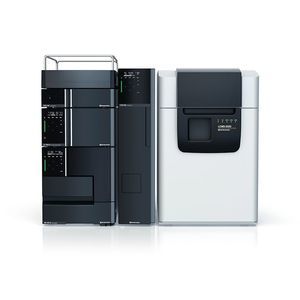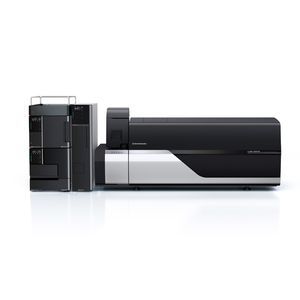
Mass spectrometer OAD-TOF for the food industryQ-TOFbenchtop
Add to favorites
Compare this product
Characteristics
- Type
- mass
- Applications
- for the food industry
- Technology
- Q-TOF
- Configuration
- benchtop
Description
The OAD-TOF system is a Q-TOF LCMS that realizes OAD (Oxygen Attachment Dissociation), Shimadzu's proprietary fragmentation technology. It allows the analysis of the position of carbon-carbon double bonds in lipids and other organic compounds. Combined with the LCMS-9050, which boasts world-class high mass accuracy and fast polarity switching, it enables the creation of innovative applications.
Features
Innovative fragmentation technology
The OAD-TOF system is equipped with an OAD RADICAL SOURCE I, which enables Oxygen Attachment Dissociation (OAD) analysis, an innovative fragmentation that utilizes Shimadzu’s proprietary radical reaction. It can measure fragment ions that cannot be obtained by conventional collision-induced dissociation (CID), where ions are fragmented by collision with an inert gas such as argon or nitrogen. The irradiating oxygen radicals specifically oxidize/dissociate double bonds between carbons, which is useful for structure estimation of organic compounds such as lipids. The technique can be applied to monovalent ions and negative ions, which have been difficult to fragment using radical reactions by electrons and anions, and provides completely new structural information
What is OAD (oxygen attachment dissociation)
CID preferentially dissociates weak chemical bonds. In the case of lipids, CID can determine the basic structure of lipids and polar groups, and the carbon composition of side chains (number of carbons and double bonds). With OAD, on the other hand, oxygen radicals react specifically with the double bonds between carbons, causing dissociation. By measuring fragment ions specific to the double bond,
Catalogs
No catalogs are available for this product.
See all of Shimadzu‘s catalogsRelated Searches
- Analysis software
- Microscopy
- Compound microscope
- Laboratory microscope
- Tabletop microscope
- Control software
- Laboratory software
- Spectroscope
- Laboratory balance
- Automatic scale
- Digital laboratory balance
- Benchtop laboratory balance
- Monitoring software
- Digital microscope
- Zoom microscope
- Benchtop spectroscope
- Chromatograph
- Automatic laboratory balance
- Compact microscope
- Data analysis software
*Prices are pre-tax. They exclude delivery charges and customs duties and do not include additional charges for installation or activation options. Prices are indicative only and may vary by country, with changes to the cost of raw materials and exchange rates.






